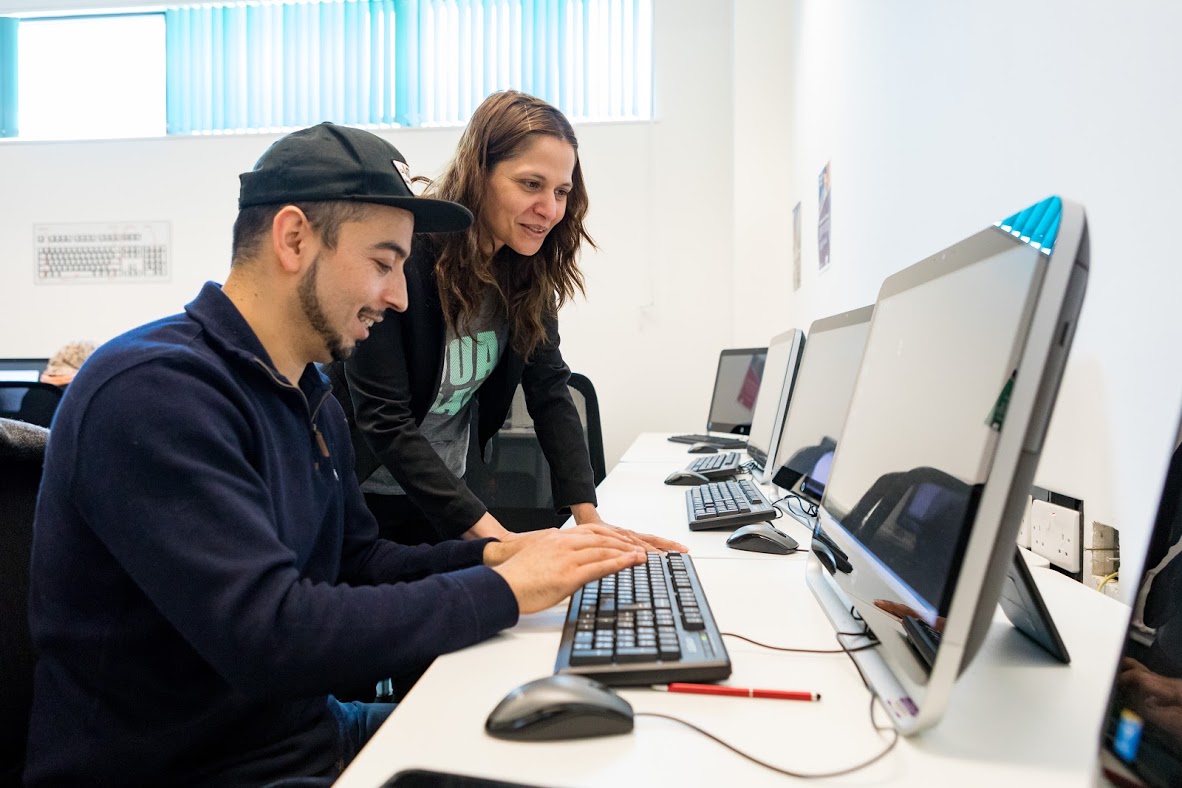My QTLS experience: Samantha Ziegenfuss
I began teaching in the further education sector in 2003, where I worked as an Art Tutor for Kent Adult Education (KAE) until 2010. During this 7-year period, I taught a variety of accredited and non-accredited courses in drawing, painting, life drawing and sculpture. In my current role at Kent Health Needs Education Service (KHNES), I teach students with a range of social, emotional and mental health (SEMH) needs in a Pupil Referral Unit (PRU). As well as helping to deliver our core curriculum subjects, I specialise in teaching art projects to Key Stage 4 and post-16 students.
What was your motivation for undertaking QTLS?
I was keen to progress with my career at Kent Health Needs Education Service and build on my initial teaching qualification with QTLS. I felt that undertaking QTLS would help me to update my vocational skills and reinforce my teaching experience with a professional qualification. It would also increase my confidence as a practitioner, allowing me to take increasing responsibility as a teacher in the field of SEMH.
What did you like about it?
The self-assessment was an effective method of identifying my strengths and areas for development against the Professional Standards for Teachers and Trainers. This enabled me to benchmark my abilities against a set criteria and establish a professional development plan within my workplace. In addition, the QTLS workbook is structured to support learning, with each stage broken down into logical steps. This was helpful when planning what to write, together with case studies on the SET website that were also very useful as a guide.
How has it benefited you as a teacher/trainer and, as a result, your learners?
I have gained greater insight to my practice, enabling me to identify strengths and focus on strategies for improvement. I have also benefitted from opportunities to reflect on my teaching and share best practice with colleagues in my workplace.
How has QTLS impacted your career?
With QTLS, I am now a fully qualified teacher and this has opened up opportunities for me to develop my career in teaching – either in mainstream or alternative educational settings. I can also add this qualification to my other achievements to progress onto a postgraduate course.
What impact has it had on your practice and your learners?
During QTLS, I developed resources such as a Personal Learning Plan and Learning Styles questionnaire to provide a profile of students' learning preferences and abilities. This helped pupils with Special Educational Needs and Disabilities (SEND) to understand and reflect on their own learning styles, abilities and targets/goals. As the course progressed, this enabled them to take increasing responsibility for assessing their own achievements and goals. I was also able to integrate this information into my lesson planning for more effective differentiation and interventions.
What impact did it have on your organisation?
During professional development, I focused on establishing more effective assessment methods in my workplace. Working with my supporter, I developed the non-core scheme of work based around an expressive art theme. Drawing on my specialist subject knowledge and experience in adult education, I decided to standardise the assessment criteria for the KS4 art curriculum, introducing an evidence-based approach to assessment incorporating a robust set of objectives.
This new system has provided continuity and a formalised approach to assessment in my workplace. To complement this, I designed a set of formative and summative assessment records to monitor and evaluate progress/achievements against the same criteria.
What have your learned about yourself?
I have learned to be a more reflective practitioner, using my knowledge to experiment with more innovative approaches and alternative ways of engaging students. I have also benefitted from the process of sharing ideas and best practice with my work colleagues.
What support did you have from your supporter?
I carried out the initial, interim and final discussions with my supporter, which was a really useful way of setting goals and reviewing progress. As well as our formal discussions, my supporter observed my lessons and provided informal feedback on my teaching style.
How did your colleagues support you throughout the process?
My colleagues observed a number of my lessons, offering feedback and advice on teaching styles. I was also able to discuss my approaches to lesson planning, schemes of work and assessment strategies, sharing ideas across the organisation.
What do you want to do next and how will you continue to develop your practice?
I would like to specialise in Social, emotional and mental health (SEMH) and integrate my teaching practice with therapeutic approaches. I would like to explore this in the context of emotional literacy and wellbeing.
What advice would you give teachers/trainers who are thinking about undertaking QTLS?
I would advise those thinking about undertaking QTLS to plan their areas for development based on the self-assessment and have a clear idea of how to meet the objectives of QTLS. It is also important to read the criteria in depth and look at other case studies. I would also say it's important to ensure that you have relevant evidence to support your work. And finally, to undertake as much CPD as possible – and keep a reflective journal to record ideas and progress for the critical reflection

check your eligibility and apply for QTLS QTLS - Professional Formation
QTLS is the badge of professionalism for post-14 education and training. It’s aimed at helping you advance your career and to demonstrate your expertise and experience to your colleagues, employers and learners.
Find out more about QTLS
